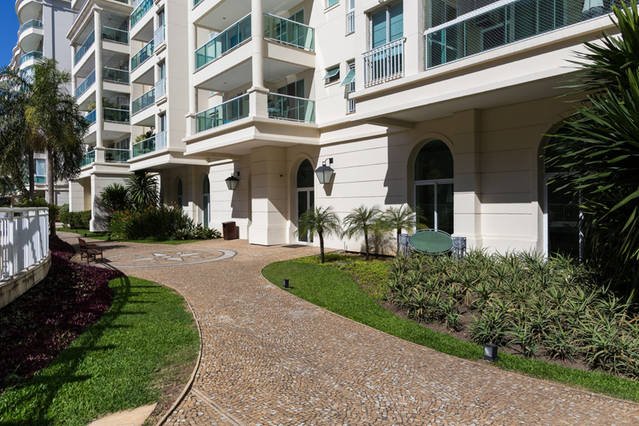The Expansion of Gated Communities in Brazil
The Expansion of Gated Communities in Brazil. In recent decades, gated communities and residential club-style developments have surged across Brazil, driven largely by escalating urban insecurity. These private enclaves offer more than housing—they function as self-contained micro-cities with 24/7 security, internal commerce, leisure facilities, and essential services.
NEWS
Unveiled Brazil
10/19/20254 min read


The Expansion of Gated Communities in Brazil: A Comprehensive Analysis
When Safety Becomes a Reverse Prison
Introduction
In recent decades, gated communities and residential club-style developments have surged across Brazil, driven largely by escalating urban insecurity. These private enclaves offer more than housing—they function as self-contained micro-cities with 24/7 security, internal commerce, leisure facilities, and essential services. Yet this “residential fortress” model raises a critical question: Are these communities inadvertently becoming self-imposed prisons?
Originally conceived as a response to crime, many gated developments now foster a lifestyle where venturing beyond the walls feels hostile or unsafe. The result is a paradox: protection morphs into isolation.
Gated Living as a Response to Urban Insecurity
According to the Brazilian Association of Professional Property Managers (Abrassp), over 68 million Brazilians—nearly one-third of the population—reside in condominiums. The primary motivator? Security. A survey by Sindiconet reveals that 69% of residents cite safety as the top benefit of condominium living.
Common features include:
24-hour gated access
Biometric entry systems
Surveillance cameras
Motorized patrols
High perimeter walls
The private security industry has seen double-digit growth, with rising demand for high-tech residential protection systems.
Residential Fortresses: The World Within the Walls
Modern gated communities resemble miniature cities, offering:
On-site supermarkets and salons
Gyms and coworking spaces
Pools, playgrounds, and sports courts
Gourmet lounges and multi-generational leisure zones
This infrastructure allows residents to fulfill most daily needs without leaving the premises. While enhancing comfort and safety, it also fosters self-referential living, where the outside world becomes peripheral or even undesirable.
Heightened Security and the Visibility of Threats
Security investments are increasingly sophisticated, including:
Bollards and road blockers
Perimeter sensors
Advanced access control systems
In São Paulo, thefts and robberies in condominiums rose 11.09% in the first half of 2022 compared to 2021. These figures reinforce the perception that walls and gates are essential for survival.
However, this intensification of boundaries deepens the “us vs. them” divide—residents inside versus outsiders. Urban sociologists warn that gated communities act as spatial enclaves, exacerbating social and geographic segregation.
When Protection Becomes Confinement
Despite robust security, breaches still occur—often due to poor access control or mismanaged entry points. The illusion of total safety can lead to complacency in personal and communal vigilance.
Moreover, when all services—shopping, leisure, grooming—are internalized, interaction with the broader city diminishes. Instead of fostering social integration, these communities risk promoting isolation and the erosion of shared public spaces.
This “world within walls” may resemble a reverse prison: leaving means facing external risks, while staying inside becomes the default.
Urban, Social, and Civic Consequences
Gated communities reinforce a dual-city model: inside the walls, order and safety prevail; outside, many neighborhoods suffer from neglect and insecurity. This dynamic intensifies socio-spatial inequality.
Internalized services encourage exclusive consumption patterns, weakening ties with the surrounding urban fabric. Residents may miss out on broader social interactions, diversity, and civic engagement.
Citizenship—often exercised in public spaces through mobility and encounters—is confined. Private protection partially replaces the communal role of urban environments.
Final Reflections
Gated communities in Brazil address a legitimate need: safer, more predictable living amid urban violence. Yet when this solution takes the form of isolated fortresses, it challenges the vision of an open, integrated city.
The “reverse prison” effect—more comfort, less freedom—serves as a warning. While individual protection is vital, it must not lead to permanent detachment from the urban collective.
For a balanced urban future, the challenge is clear: how can we reconcile safety, community, and citizenship? How do we prevent residential choices from becoming permanent escapes, and instead foster active urban participation?
Sources: Valor International
Between the UN’s Agenda 2030 and the Rise of Urban Fortresses in Brazil
Gated Communities vs. Inclusive Cities: A Critical Urban Reflection
The rapid expansion of fortress-style residential condominiums in Brazil invites a broader reflection in light of the United Nations’ Agenda 2030, particularly Goal 11, which advocates for cities that are sustainable, inclusive, and safe. Yet, the prevailing urban model in Brazil seems to move in the opposite direction—favoring social fragmentation and spatial confinement over integration.
This contradiction raises a legitimate debate: Is the proliferation of walled, self-sufficient residential zones a spontaneous reaction to urban insecurity, or part of a controlled urbanism trend, where mobility and social interaction are increasingly restricted to monitored, enclosed areas?
Some urban analysts critically suggest that leniency in laws addressing urban crime may—intentionally or not—fuel collective fear, thereby legitimizing the demand for fortified enclaves. This isn’t about conspiracy theories, but rather a call to reflect on how fear and insecurity can become politically functional, shaping the architecture of modern cities into protected yet isolated spaces—where freedom and safety no longer coexist.
Final Reflections: Safety, Citizenship, and the Future of Urban Living
Residential condominiums in Brazil undeniably respond to a legitimate need: the pursuit of greater safety, comfort, and predictability in a context of urban violence. However, when this solution manifests as isolated fortresses—with high walls, controlled entry points, and internalized services—it also paves the way for a lifestyle that challenges the very notion of an open, integrated city.
The concept of a “reverse prison” perceived by some residents—more comfort, less freedom—serves as a warning. While individual protection is essential, it must not lead to the permanent severing of ties with the outside world, nor to the erosion of public spaces and civic engagement.
For a balanced urban future, the challenge may be: how do we reconcile safety, social interaction, and citizenship? How can condominium living avoid becoming a personal retreat while the surrounding urban environment deteriorates? And how do we ensure that choosing a place to live remains a form of urban participation—not a permanent escape?
